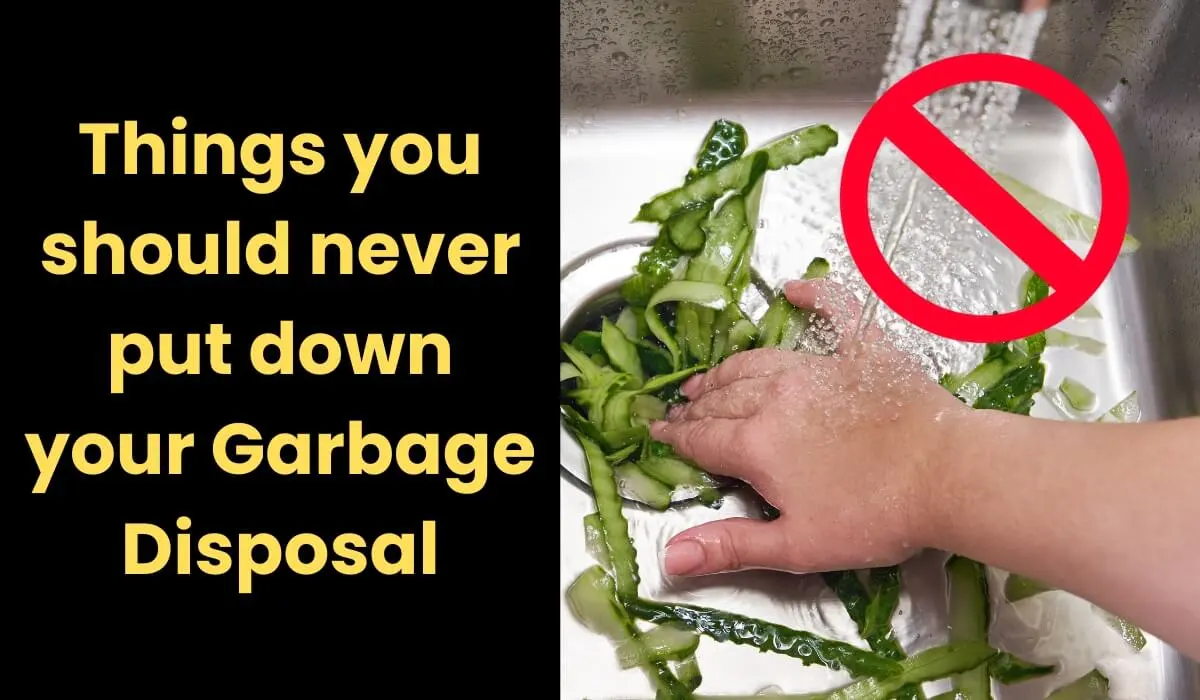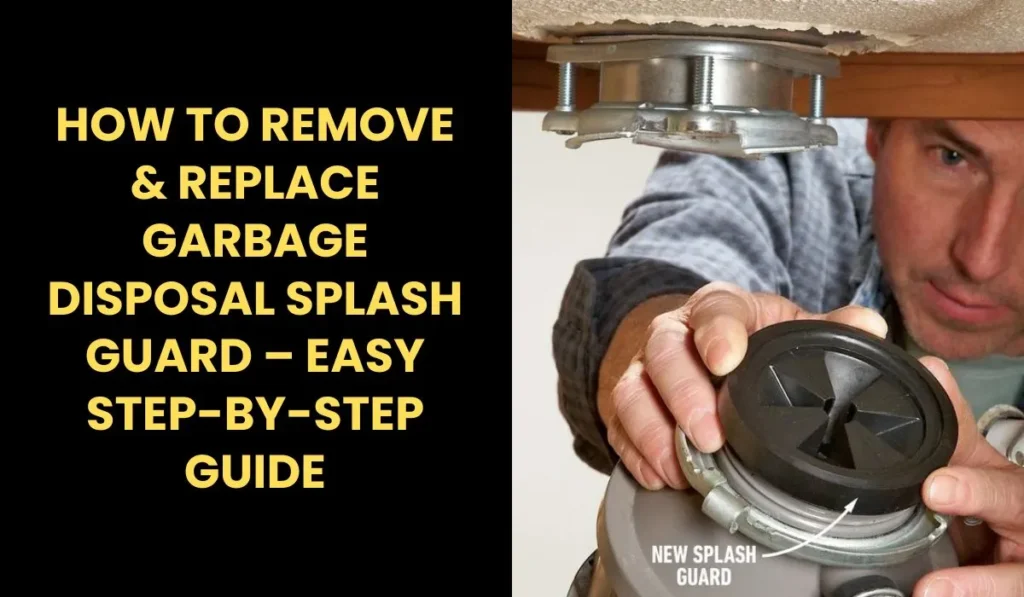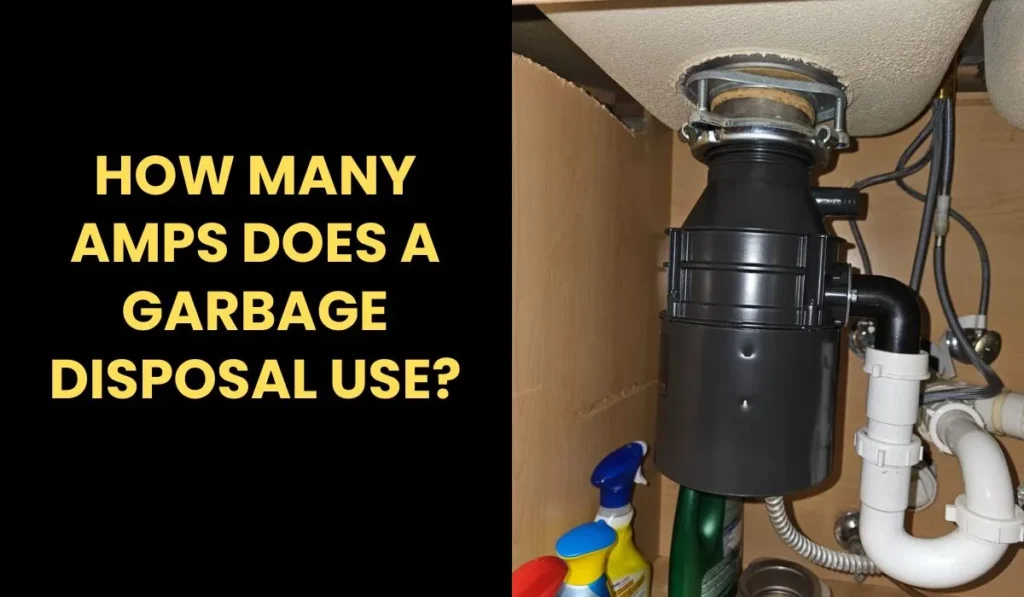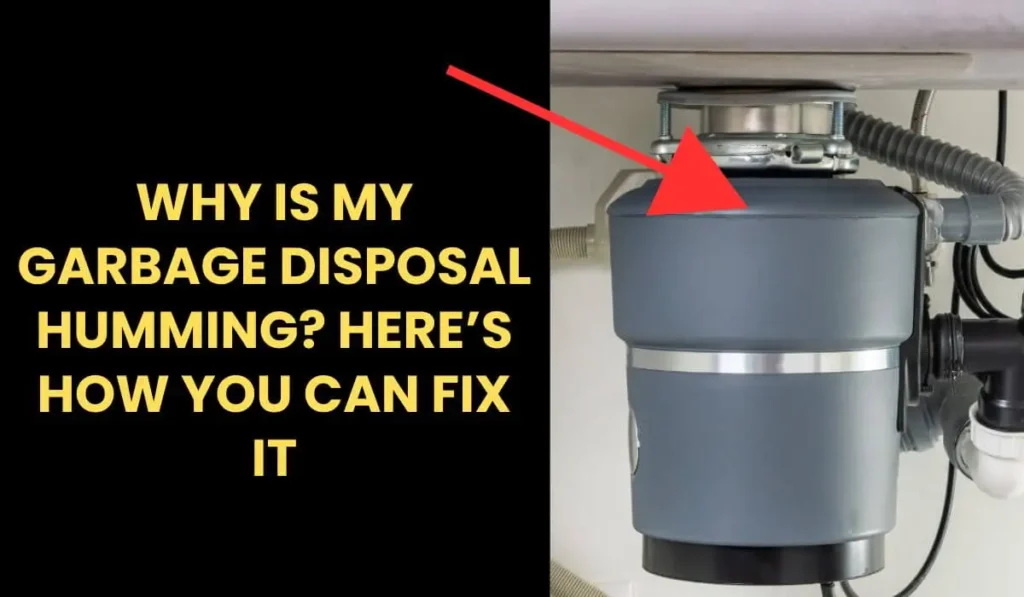15 Things You Should Not Put Down Your Garbage Disposal
Garbage disposals might just be the unsung heroes of the modern kitchen. Tucked away under the sink, they munch away on our leftovers, making cleanup a breeze. But as hardworking as they are, they’re not invincible. In fact, treat your garbage disposal like an indestructible trash compactor, and you could be dialing up a hefty plumber’s bill before you know it.
In this guide, we’re not just sticking to the usual suspects like coffee grounds and bones. Oh no, we’re diving deeper, expanding your know-how with a broader range of items that could lead your disposal to an early retirement. Plus, we’ll sprinkle in some top-notch maintenance tips to keep your disposal grinding away happily for years.
Learn the Do’s and Don’ts of the Disposal
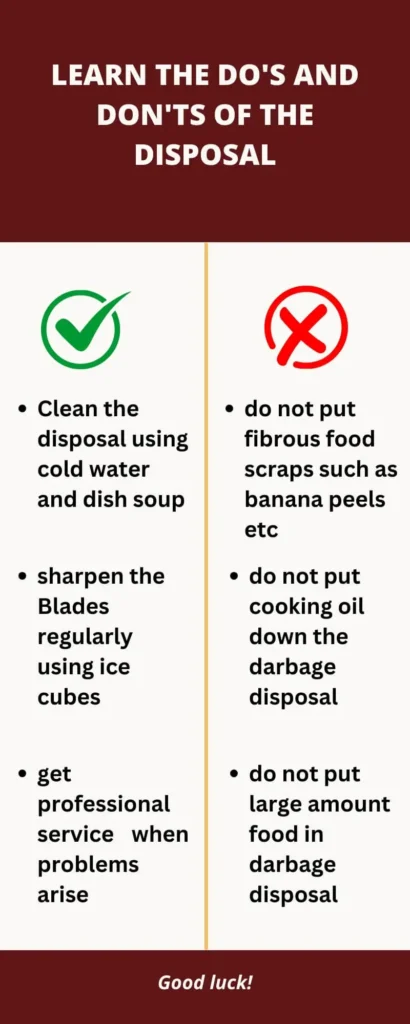
First up, the golden rule: not everything goes down the garbage disposal. It might be tempting to let leftovers slide right off your plate and into that spinning abyss, but discretion is the better part of valor—and appliance longevity. By understanding the basic do’s and don’ts, you’re not only protecting your disposal but also keeping those plumber visits to a minimum.
Regular maintenance is equally crucial. You wouldn’t drive your car without ever changing the oil, right? Well, your disposal needs that kind of attention too. Simple routines like running cold water through the disposal before and after use can make a world of difference. It ensures that any food scraps are thoroughly flushed through the system, preventing buildup and those dreaded clogs.
Common Items That Damage Your Disposal
Navigating what can and can’t be tossed into your garbage disposal is key to avoiding a kitchen catastrophe. Let’s delve into some common culprits that can bring your disposal’s grinding to a halt, starting with a breakfast favorite and moving onto some starchy staples.
1. Coffee Grounds
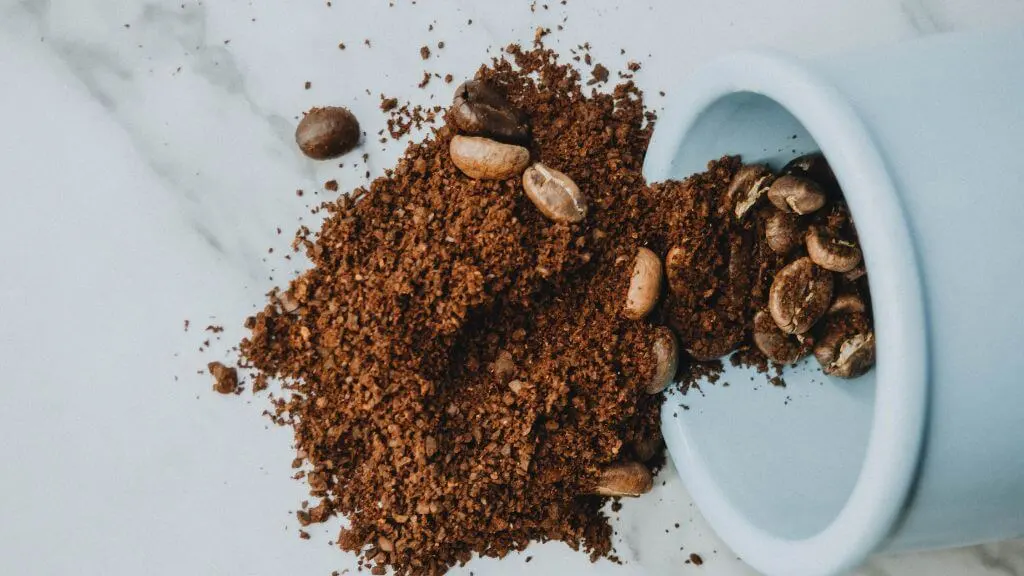
Morning coffee rituals are sacred, but the disposal is no place for the remnants of your brew. Coffee grounds might seem harmless—after all, they’re just tiny granules. However, they pack a sneaky punch. When grounds go down the drain, they don’t flow freely through your plumbing. Instead, they accumulate, settling like silt in a riverbed.
Over time, this build-up can form a dense, gunky sediment that’s a prime candidate for clogs. To keep your mornings smooth and your sink clearer, toss those coffee grounds into the trash or add them to your compost pile.
2. Pasta, Rice, and Bread
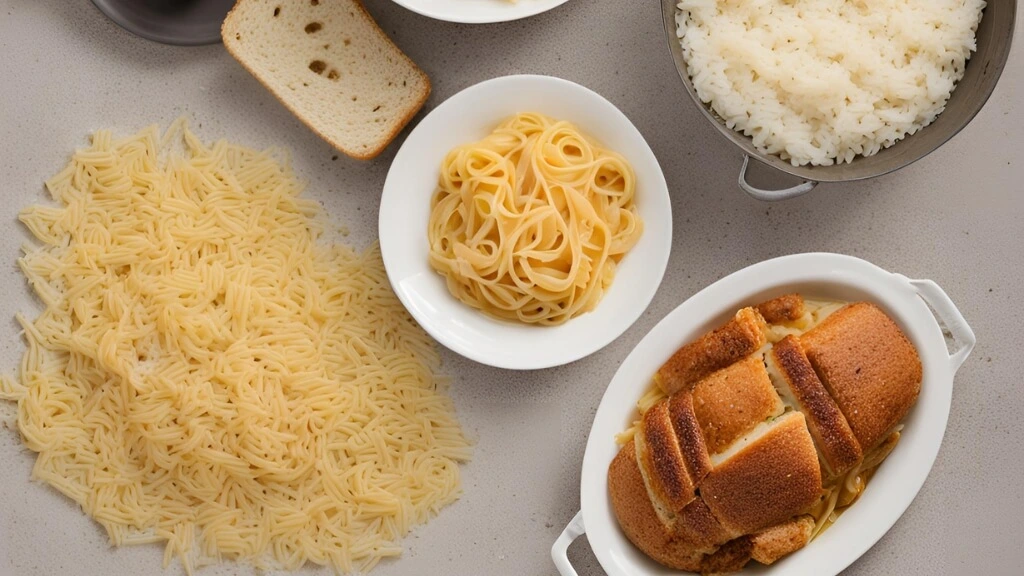
If you’ve ever watched pasta or rice expand in a pot of boiling water, you’ve seen firsthand their absorbent powers. This same property spells trouble in your disposal. When pasta, rice, or even bread goes down the drain, they continue to absorb water, swelling up and forming a stodgy, thick mass that can block your pipes.
Even running the disposal longer or using lots of water can’t always prevent this blockage. It’s best to keep these expandable foods out of your disposal to avoid the kind of plumbing drama no one wants to deal with after a hearty meal.
Also Read: How To Fix A Vibrating Or Shaking Garbage Disposal
3. Animal Bones
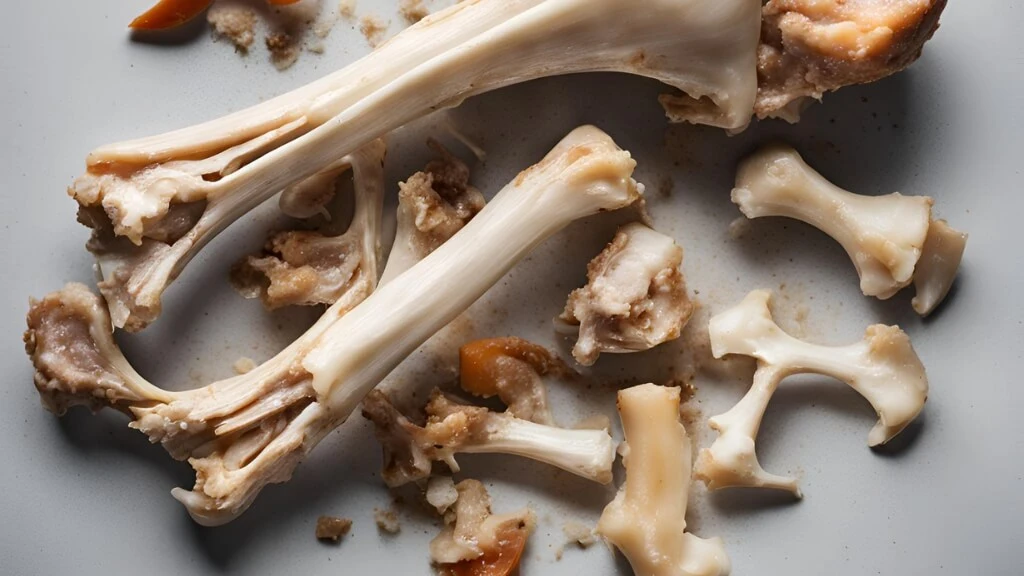
When dinner’s done and you’re left with a plate of bones, it might be tempting to just rinse them down the disposal. Here’s why that’s a risky move: animal bones are a disposal’s nemesis. Despite how robust your disposal may seem, it’s not built to handle the toughness of bones. These hard scraps can blunt and even break the impellers—the blunt grinders that macerate your food waste.
If bones aren’t pulverized properly, they just spin around, wearing down the mechanism and potentially leading to expensive repairs. So next time, instead of risking it, simply throw those bones in the trash where they won’t cause any trouble.
4. Nuts and Shells

Nuts and their hard shells can also wreak havoc on your disposal. While your disposal might seem like it could double as a nutcracker, in reality, it’s not equipped for this job. Hard shells from nuts and seafood can dull and jam the disposal’s impellers. For example, grinding up things like peanut shells can result in a coarse, sandy residue that settles in your pipes, potentially leading to blockages.
And if you think about throwing in harder shells, like those from clams or oysters, think again. These can be as damaging as throwing small stones down your drain. Better safe than sorry—keep those shells out of your disposal to maintain its efficiency and extend its life.
5. Pits and Seeds
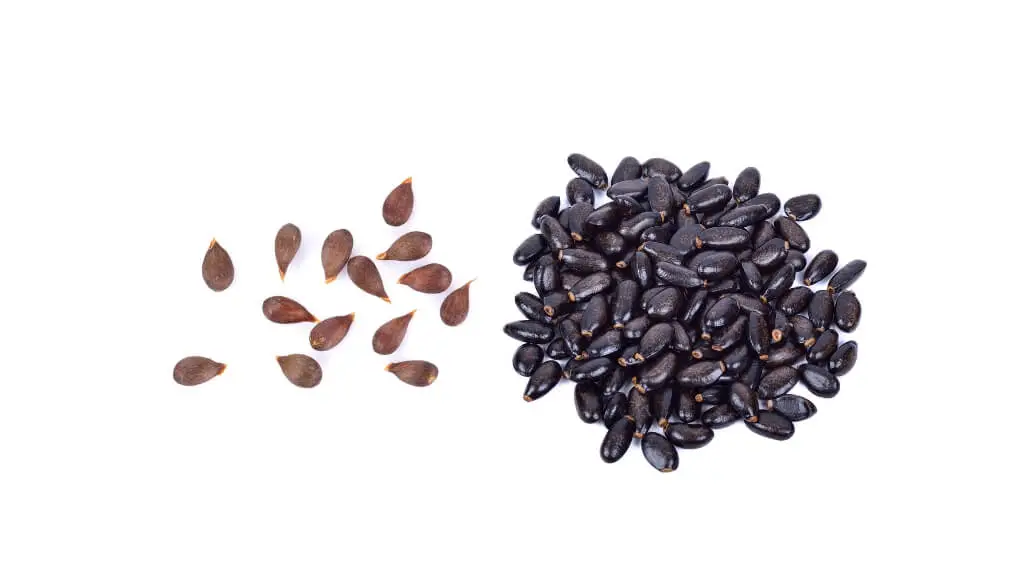
Pits and seeds might be small, but they’re tough enough to challenge the might of your garbage disposal. From peach pits to avocado seeds, these natural nuggets are designed to protect the life within, making them extremely hard and resilient. In the realm of your disposal, they act more like projectiles than food waste, capable of damaging the grinding components.
Since they are generally round and very hard, they often just bounce around inside the disposal, wearing on the mechanisms without actually breaking down. Toss these tough seeds and pits into your compost or trash instead of risking the integrity and functionality of your disposal.
6. Onion Layers
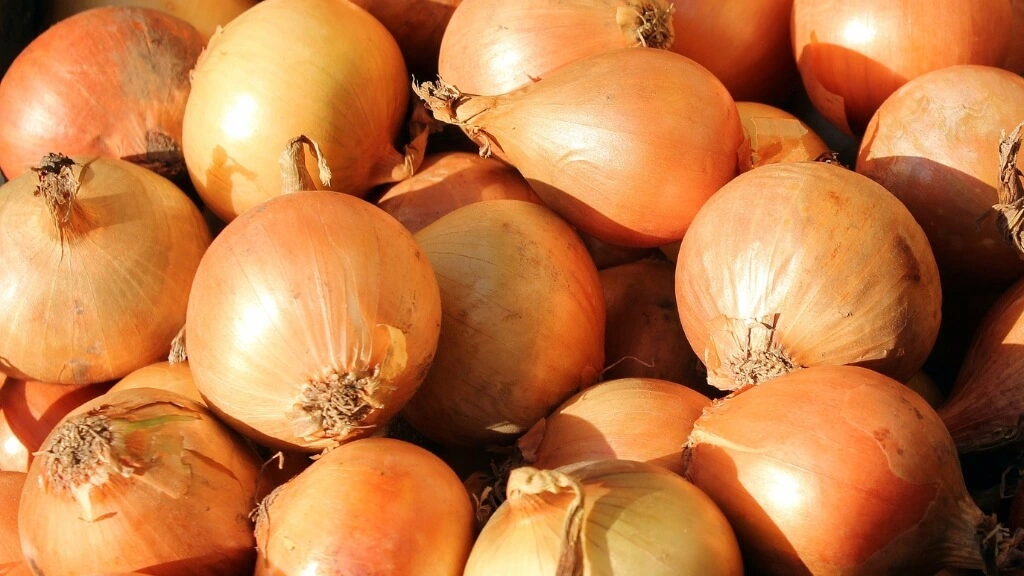
Onions, while flavorful and essential in many dishes, come with a disposal warning sign. It’s not the onion itself but the thin, papery layers that pose the problem. When these layers peel off during chopping and rinsing, they can slip through the disposal seemingly harmless. However, once inside, they behave almost like fabric, wrapping and twisting around the disposal’s blades (impellers).
Over time, these layers can accumulate, tangling up and potentially jamming the disposal mechanism. They can also act as nets, catching other bits of food waste and leading to a frustrating clog. To keep your disposal running smoothly, it’s wise to peel onions directly into the trash can and keep those sneaky outer layers far away from your sink.
7. Egg Shells
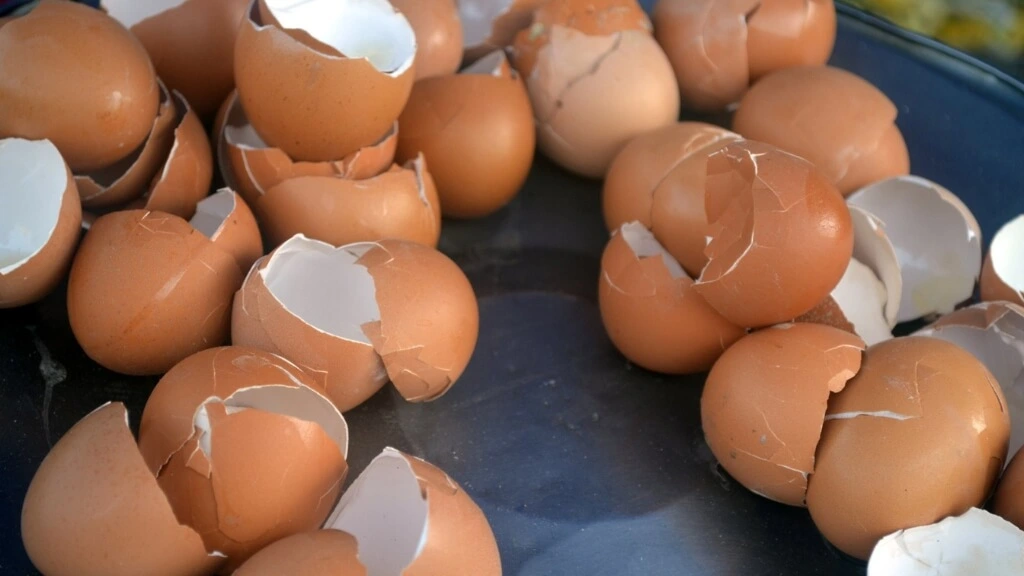
Let’s crack the myth about egg shells in the garbage disposal: contrary to popular belief, they do not sharpen the disposal’s grinding components. Garbage disposals don’t actually have blades; they have impellers that are blunt rather than sharp. When egg shells are introduced into the disposal, they don’t hone these impellers. Instead, the membrane inside the shells can wrap around the impellers, causing more harm than good.
The crushed shells can also accumulate in the pipes, creating a gritty sediment that may lead to clogs. So next time, instead of tossing those egg shells down the sink, consider adding them to your compost heap or simply throwing them in the trash.
Further Reading: 5 Effective Steps To Get Rid Of Garbage Disposal Smell
8. Fibrous or Stringy Fruits and Vegetables
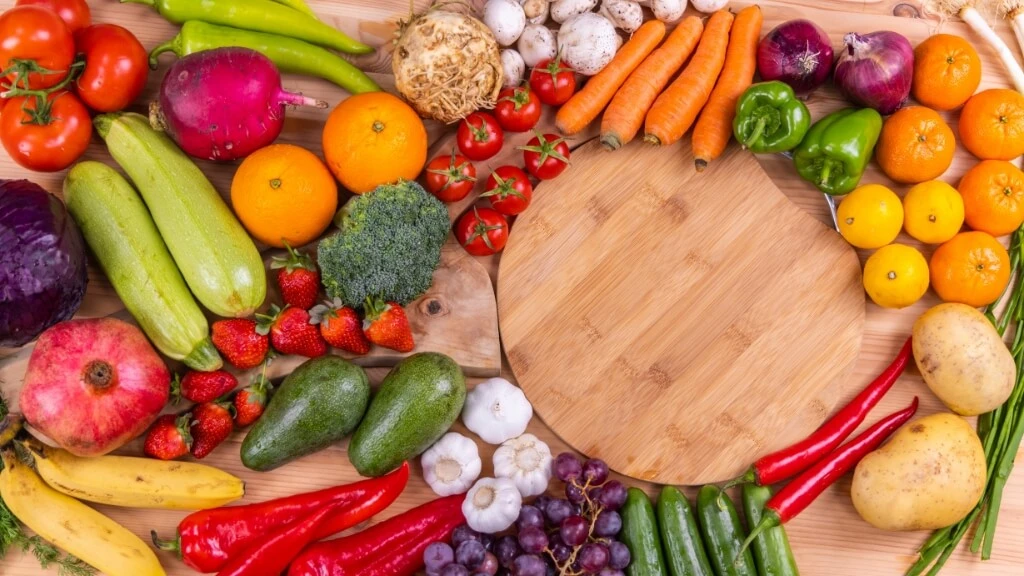
When it comes to your garbage disposal, not all fruits and veggies are created equal. Fibrous or stringy produce, like celery, asparagus, banana peels, and corn husks, can be particularly problematic. These items have tough, stringy fibers that can entangle themselves around the disposal’s impellers. Over time, this can strain the motor and lead to mechanical failures.
Additionally, these fibrous materials can act like a net inside your plumbing, catching other debris and leading to stubborn clogs that are tough to clear. It’s best to dispose of these stringy scraps in your compost bin or trash can to keep your disposal running smoothly and efficiently
9. Potato Peels

Potato peels might seem harmless enough as they swirl down your garbage disposal, but they can actually be quite troublesome. These thin skins have a tendency to clump together when they’re ground up, creating a thick, pasty substance. This starchy mass sticks to the sides of your pipes and can gradually accumulate, narrowing the pathway and ultimately leading to clogs.
If a large volume of peels is sent down the disposal at once, the risk of forming a blockage increases significantly. It’s a much safer bet to compost these peels or simply throw them in the trash rather than risking a plumbing predicament.
10. Grease, Oil, and Fat

Grease, oil, and fats are the sneakiest of kitchen foes. While they may pour down your drain as liquids, don’t be fooled: as they cool, they solidify into a waxy, sticky substance that adheres to the inner walls of your plumbing. Over time, this buildup can significantly reduce the diameter of your pipes, leading to slow drains and stubborn clogs.
Additionally, these fats can capture and hold other debris that comes down the drain, exacerbating the blockage problem. The best practice is to let these fats cool in a container and dispose of them in the trash—your pipes will thank you for it.
11. Non-Food Materials
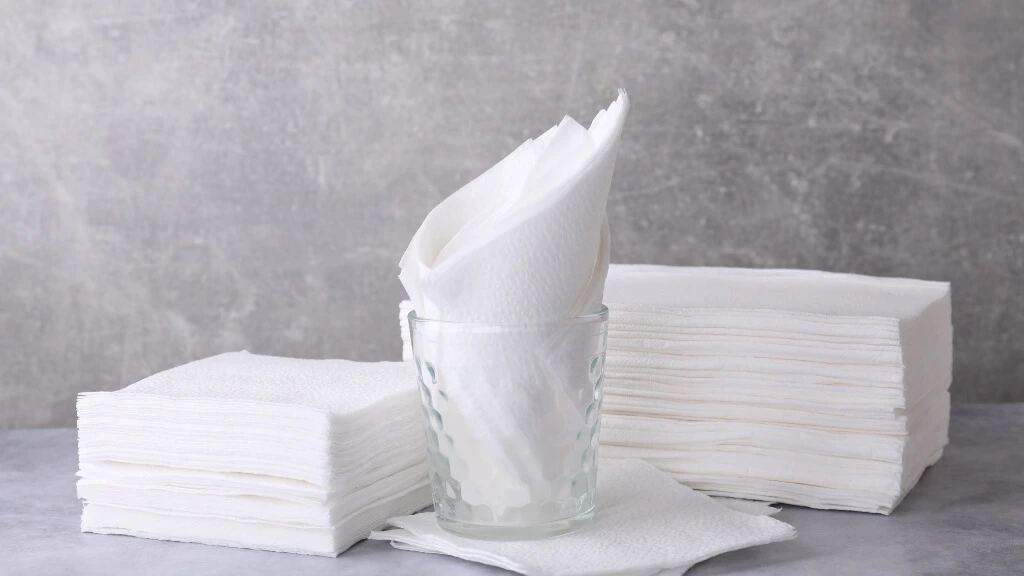
It might be called a “garbage” disposal, but that doesn’t mean it should be treated like a garbage can. Non-food items such as paper towels, plastic wrappers, and tissues have no place in your disposal. These materials are not designed to be broken down by the disposal’s mechanism and can lead to jams and clogs.
Moreover, they can pass through the disposal intact and accumulate in the plumbing, causing significant blockages. Always ensure that only biodegradable, food-related items make their way into your disposal to maintain its efficiency and protect your plumbing.
12. Starchy Foods Beyond Pasta and Bread
While pasta and bread are well-known culprits for clogs in your disposal, other starchy foods like oats, beans, and lentils pose similar risks. These foods expand when they absorb water, just like pasta and rice, filling up your drain and potentially leading to blockages. They can also create a thick paste that adheres to the blades and interior of the disposal, hindering its effectiveness and efficiency.
To avoid such issues, it’s best to keep these starchy foods out of your disposal. Consider alternative disposal methods like composting or simply using the trash can for these starchy scraps to ensure your disposal remains clear and functional.
13. Hard-to-Grind Foods
Some foods just aren’t meant for the grinding gears of your garbage disposal. Items like raw carrots, apple cores, and even tough cuts of meat can pose significant challenges. These hard-to-grind foods require more force and can strain the motor, leading to wear and tear or even mechanical failure over time.
Moreover, these tough items often don’t break down completely, risking partial blockages that can escalate into bigger plumbing issues. Always assess the firmness and texture of food waste before deciding to grind it down. When in doubt, opting for the trash can or compost bin can save you a lot of hassle.
14. Chemical Drain Cleaners

When faced with a clog, it might be tempting to pour a chemical drain cleaner down your disposal in hopes of a quick fix. However, these harsh chemicals can do more harm than good. Not only can they corrode the metal components of your disposal, but they can also damage the pipes and plumbing beneath.
The caustic substances in these cleaners are designed to eat through blockages, but they don’t discriminate, potentially eating through much more in the process. For safer alternatives, consider using a plunger or a plumber’s snake, or better yet, call a professional plumber to handle severe clogs safely.
Further Reading: Can You Put Drain Cleaner In A Garbage Disposal?
15. Large Amounts of Food
While your garbage disposal is indeed designed to handle food waste, moderation is key. Throwing large amounts of food down your disposal at once can overwhelm the system, leading to clogs and reducing its efficiency. It’s important to feed food into the disposal gradually and to use plenty of cold water to help break down the food and facilitate its journey through the plumbing.
By managing the amount of food you dispose of at one time, you can extend the life of your disposal and avoid unnecessary plumbing problems. Keeping your disposal’s workload manageable and your practices mindful ensures that your disposal can continue to help you in the kitchen without becoming a burden.
Tips for Maintenance and Care
Keeping your garbage disposal in top shape is not just about avoiding certain items; it’s also about embracing regular maintenance and safe practices. Here’s how you can ensure that your disposal runs smoothly and efficiently, reducing the risk of breakdowns and extending its lifespan.
Regular Cleaning: Regular cleaning is crucial for maintaining the efficiency of your disposal. A simple routine after use can prevent odor build-up and residue from forming. Run your disposal with a stream of cold water for a few seconds before and after grinding any food. Every few weeks, you can freshen it up by grinding a few ice cubes along with a slice of lemon or some baking soda. This helps scrub the grinding chamber and blades, while also neutralizing unpleasant smells.
Proper Operation: Always use cold water when running your disposal. Cold water solidifies any fats or oils, making it easier for the disposal to break them down and flush them out, preventing grease build-up in your plumbing. Additionally, make sure to cut larger items into smaller pieces before disposing of them, and feed them gradually into the disposal rather than all at once.
Avoid Harsh Chemicals: As mentioned earlier, avoid using harsh chemical cleaners in your disposal, as these can damage both the disposal and the plumbing. For tough clogs or maintenance, opt for natural cleaners or seek professional help if the situation is beyond simple home remedies.
Periodic Inspections: Even with careful use, it’s a good idea to have your disposal inspected by a professional every couple of years. They can catch issues that might not be obvious and perform deeper maintenance tasks that can significantly extend the life of your unit.
Conclusion
Well, there you have it! Keeping your garbage disposal in tip-top shape is as much about what you don’t put down it as it is about the care you put into it. We’ve gone over a laundry list of usual—and not so usual—culprits like coffee grounds, pasta, bones, and even the pesky pits from your favorite fruits. These items can really gum up the works, leading to those all-too-familiar clogs that nobody wants to deal with.
But remember, your garbage disposal isn’t a black hole for every leftover. Treating it right means knowing what it can handle, cleaning it regularly with some simple DIY tricks, and using it properly to prevent wear and tear. Keep that cold water running, introduce food scraps gradually, and steer clear of harsh chemicals to keep your disposal running smoothly.
We encourage you to stick to these guidelines to avoid the headache of a malfunctioning disposal. Got any tips or stories about your disposal adventures? Drop them in the comments below—we all learn better when we share our experiences. Let’s keep our kitchens efficient and our disposals happy, one grind at a time!
The Author

I’m Muhammad Nabeel Dar, an employee in waste management and the owner of Garbage Waste Disposal with more than four years of experience helping people to control waste and garbage disposals are the best tools to control it. Read more

